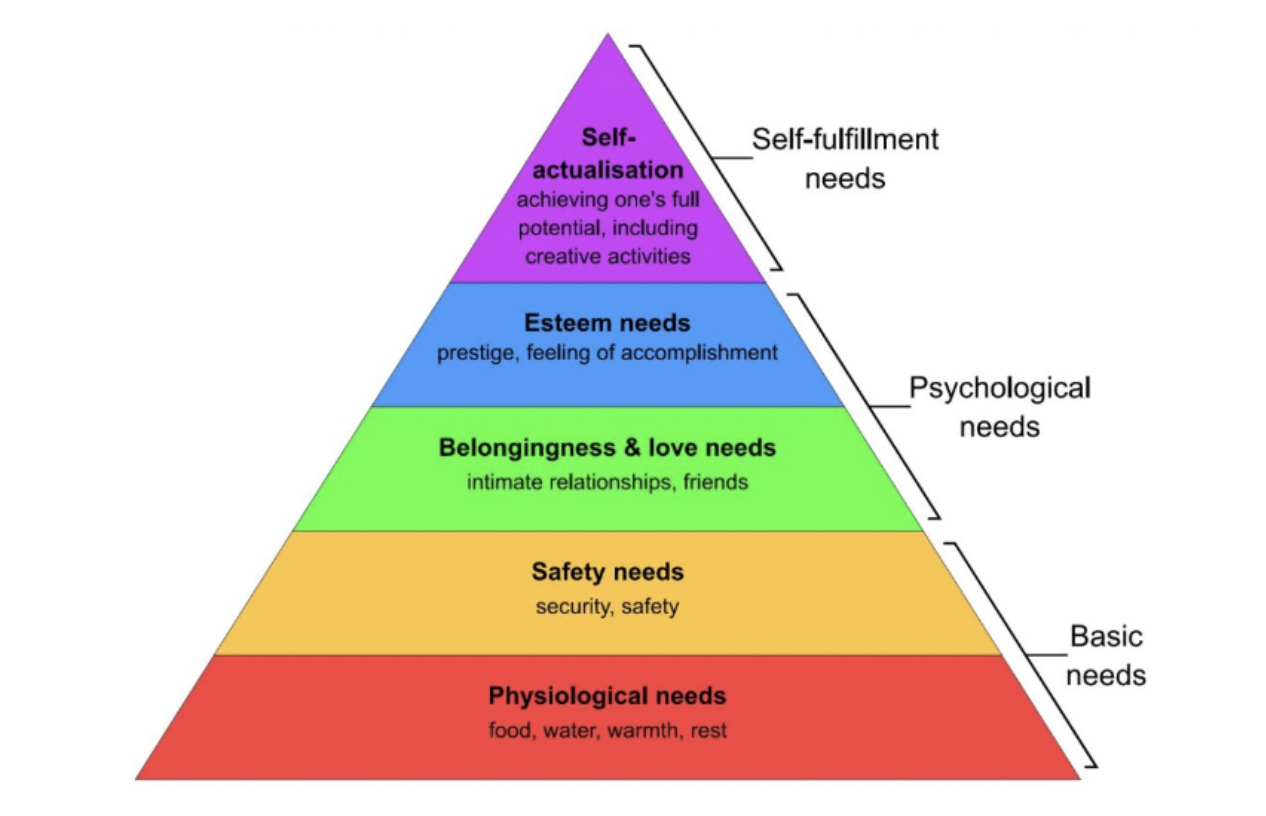
Surviving Survival Mode
Back in 1943, Abraham Maslow proposed “A Theory of Human Motivation” and developed what we now refer to as “Maslow’s Hierarchy of Needs.” The premise is that we start at the bottom of a pyramid of needs and those needs have to be fulfilled in order to work our way up to the top.

The Basic Needs, at the bottom of the pyramid, include food, water, warmth, rest, security, and safety. Without these, we cannot progress to relationships, esteem, and self-actualization. We are living in Survival Mode.
How this plays out is that as therapists, friends, or family members who are trying to help clients or loved ones in pain, we will fall short if we are not addressing the suffering person’s level of need.
This was brought home to me recently when I went to visit some friends of my sister’s. They have been struggling with addiction and family relationships for some time, but in the past few weeks, they both had some health issues and leaky plumbing in their house. These latter issues put them squarely in the Basic Needs at the bottom of the triangle. Any discussion about other issues became moot, although it provided some escape.
The addiction was long-term and ongoing, as was the family strife. Efforts to help resolve any of that, even with simple suggestions, were going to go astray. What they needed in the here and now was stability in their living space, rest from their medical problems, and an overall feeling of safety.
As a therapist, it is incredibly important to evaluate my clients’ place in this hierarchy. They may come to me because of relationship issues, or feelings of inadequacy, but if I don’t check to make sure their Basic Needs are met, therapy won’t go anywhere.
Clients may not even realize that they are struggling with Basic Needs. They have been surviving Survival Mode for so long, it’s a way of life. They can’t see the wood for the trees, as we say.
So, begin your evaluations with assessing that Basic Needs are being met, and really pay attention to “Safety.” Many aspects of safety include not just physical, but emotional safety. Help your clients establish their oases and safe places before diving into their psychological and self- fulfillment needs.
Be In Light,
Carol
